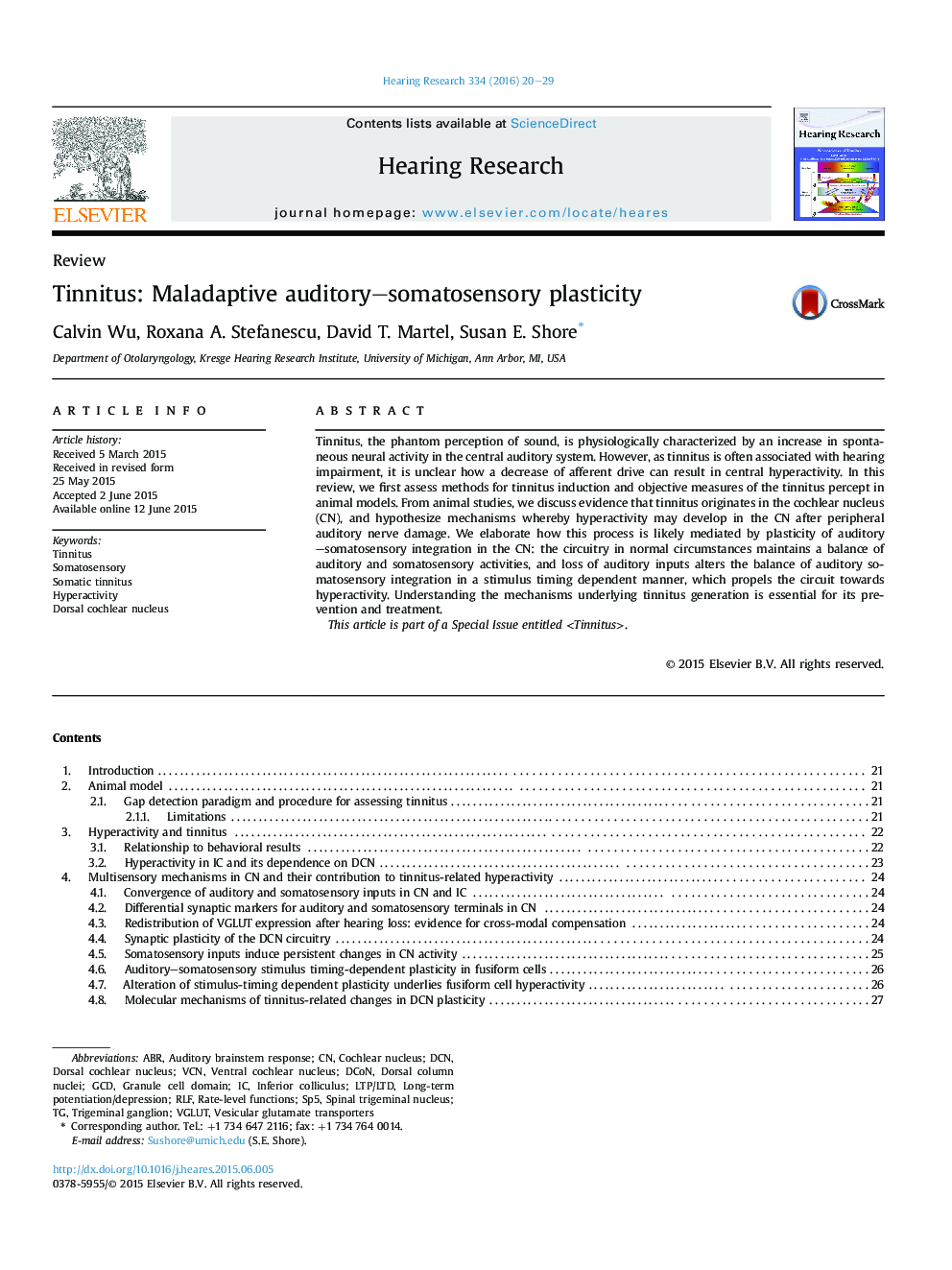| Article ID | Journal | Published Year | Pages | File Type |
|---|---|---|---|---|
| 4355071 | Hearing Research | 2016 | 10 Pages |
•Gap detection assessments of tinnitus are supported by spontaneous rates.•Tinnitus originates in the cochlear nucleus.•Up-regulation of somatosensory inputs contributes to tinnitus-related hyperactivity.•Auditory–somatosensory plasticity contributes to tinnitus generation.
Tinnitus, the phantom perception of sound, is physiologically characterized by an increase in spontaneous neural activity in the central auditory system. However, as tinnitus is often associated with hearing impairment, it is unclear how a decrease of afferent drive can result in central hyperactivity. In this review, we first assess methods for tinnitus induction and objective measures of the tinnitus percept in animal models. From animal studies, we discuss evidence that tinnitus originates in the cochlear nucleus (CN), and hypothesize mechanisms whereby hyperactivity may develop in the CN after peripheral auditory nerve damage. We elaborate how this process is likely mediated by plasticity of auditory–somatosensory integration in the CN: the circuitry in normal circumstances maintains a balance of auditory and somatosensory activities, and loss of auditory inputs alters the balance of auditory somatosensory integration in a stimulus timing dependent manner, which propels the circuit towards hyperactivity. Understanding the mechanisms underlying tinnitus generation is essential for its prevention and treatment.This article is part of a Special Issue entitled
